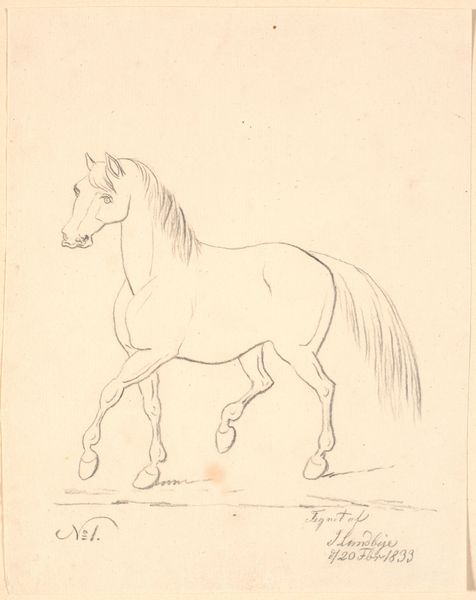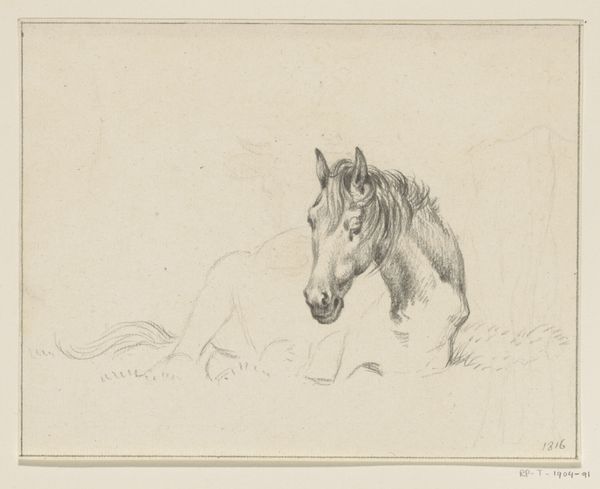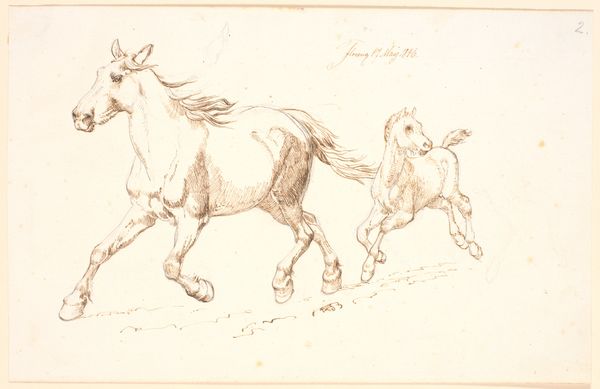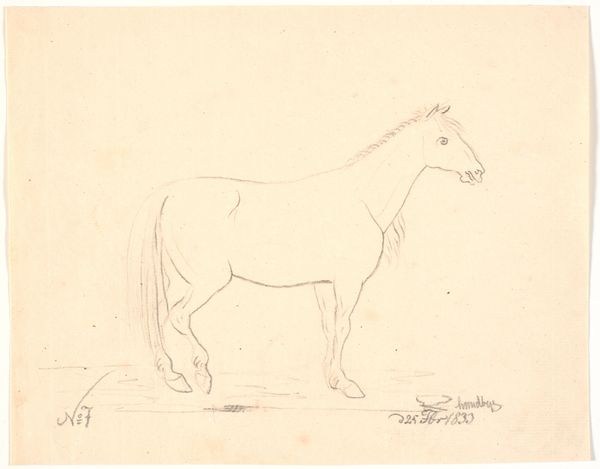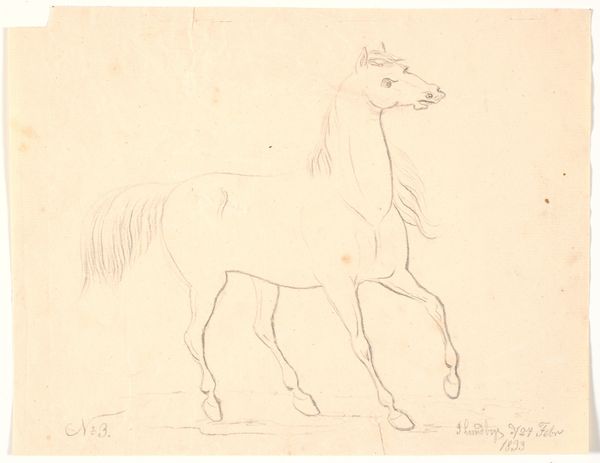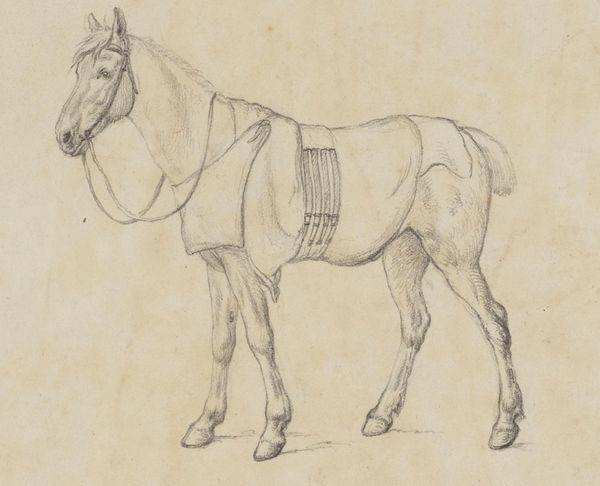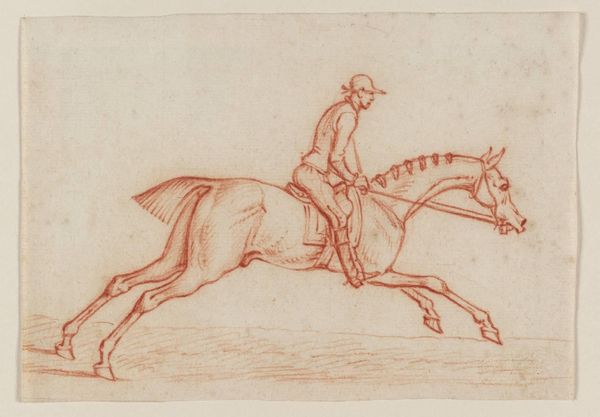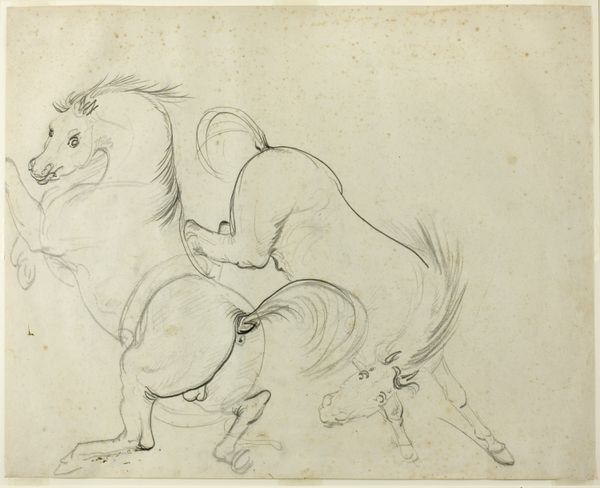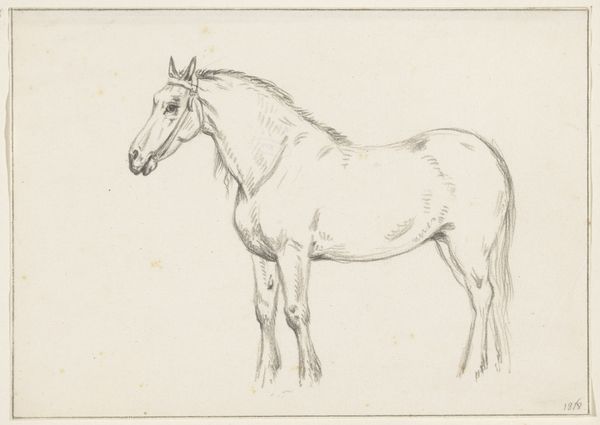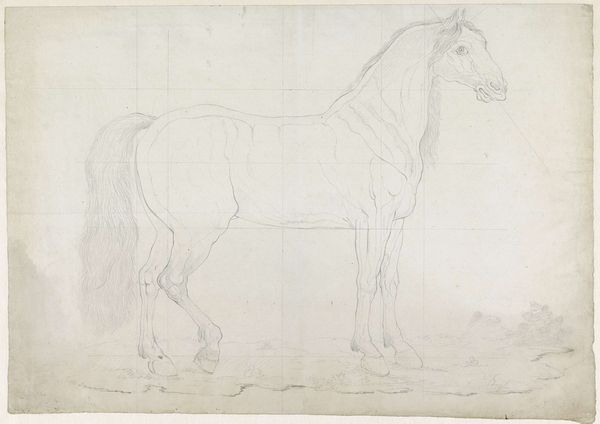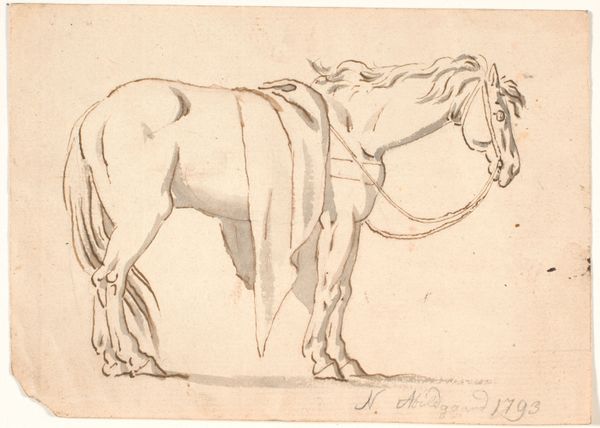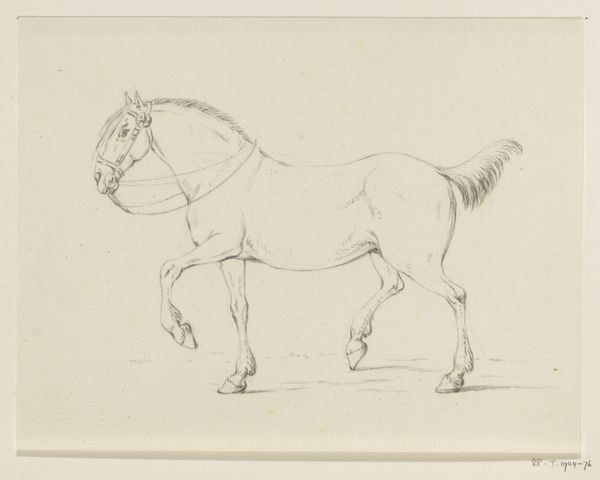
drawing
#
drawing
#
amateur sketch
#
toned paper
#
light pencil work
#
pencil sketch
#
incomplete sketchy
#
study drawing
#
charcoal drawing
#
detailed observational sketch
#
pencil work
#
initial sketch
Dimensions: 74 mm (height) x 124 mm (width) (bladmaal)
Curator: This delicate drawing is titled "En hest i trav," or "A Horse in Trot," attributed to Lorenz Frølich. It resides here at the SMK, created sometime between 1735 and 1835. Editor: There’s an immediate sense of lightness here; it feels very ephemeral, almost as if the horse could disappear from the page any second. I’m also struck by how much dynamism is achieved with such simple lines. Curator: Absolutely. The dynamism is crucial. Let's consider the cultural moment in which Frølich was working. Horses, then as now, were potent symbols of power, freedom, and even aristocracy. But notice how this isn't a stately portrait; there’s something much more informal happening here. Editor: It's interesting that you mention aristocracy. I see a clear link to equestrian training manuals from that time. It gives the impression of a study, of someone attempting to capture a specific movement, like a material experiment in capturing equine motion and labor. Curator: I agree, the drawing gives us insights into artistic training and technique. However, consider the wider scope of societal influence in his body of work. Frølich’s later pieces depict many figures in scenes from Norse mythology, a key factor in the construction of a nationalist, specifically Danish, identity in the 19th century. It would be reductive to interpret his later life in light of the political implications of national identity-building in Denmark. Editor: The emphasis on raw pencil sketches, like the strokes that barely describe the landscape, invites us to focus on the working method. Curator: It truly does open up conversations. Thank you for considering "En hest i trav" with me. Editor: Thank you. It's compelling to examine this piece through lenses both historical and material.
Comments
No comments
Be the first to comment and join the conversation on the ultimate creative platform.
